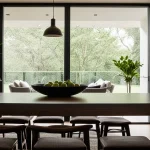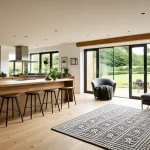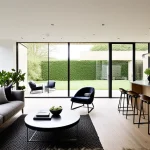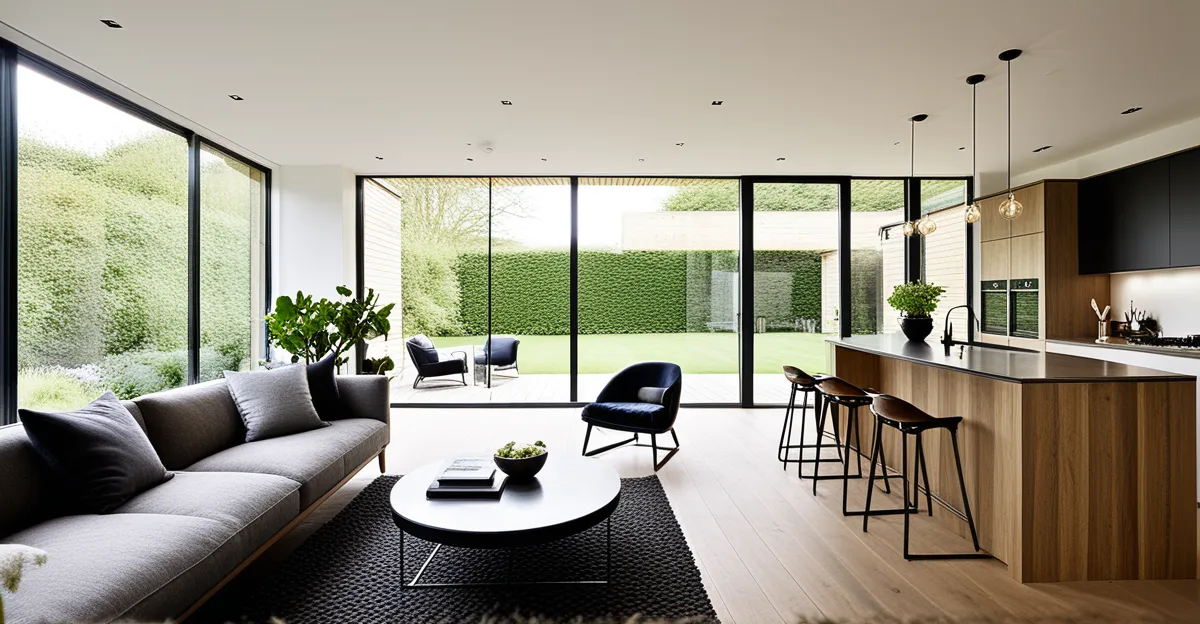Core Principles of Sustainability in British Interior Design
British interior design sustainability revolves around balancing eco-friendly interiors with aesthetic and cultural values. Central to this is the emphasis on energy efficiency and conservation, where designers optimise heating and cooling systems to reduce energy consumption without compromising comfort. Integrating natural lighting plays a significant role—maximising daylight through window placement and skylights helps decrease reliance on artificial lighting, promoting sustainability.
Ventilation is another critical factor. Proper airflow strategies reduce the need for energy-intensive climate control, enhancing indoor air quality while conserving energy. British interior design sustainability also ensures preserving historical elements, maintaining the character of period properties while employing modern sustainable techniques like improved insulation and environmentally safe materials.
Also to see : How Can You Transform Your UK Living Space into an Eco-Friendly Haven?
Sustainable design principles inherently support longevity and adaptability, encouraging designs that endure both physically and stylistically. The approach promotes harmony between past and present, blending heritage with innovation to create interiors that are both eco-conscious and uniquely British. Applying these principles ensures interiors are not only stylish but also responsible, minimising environmental impact while celebrating British cultural identity.
Eco-Friendly Materials and Sourcing Practices
British interior design sustainability places strong emphasis on sustainable materials to reduce environmental impact. Central to this is the use of reclaimed wood, recycled metals, and upcycled textiles. Reclaimed wood in design not only cuts down on deforestation but also adds unique character, reflecting British craftsmanship and heritage.
Also read : How Can Small Changes Boost Your Home’s Coziness?
Prioritising locally sourced interiors enhances sustainability by reducing carbon footprint from transportation while supporting local economies. British interior design sustainability encourages using materials sourced within the UK to maintain quality and authenticity.
Low-VOC paints, finishes, and adhesives are critical in creating healthier, eco-friendly interiors. These products emit fewer harmful chemicals, improving indoor air quality—a key concern in sustainable design principles. Choosing these materials helps meet environmental standards without compromising aesthetic appeal.
Incorporating sustainable materials and sourcing practices safeguards natural resources and embodies the British commitment to responsible design. This approach ensures interiors are environmentally sensitive and culturally rooted, contributing meaningfully to eco-friendly interiors that endure.
Distinctive British Approaches to Sustainable Design
British eco-design uniquely balances heritage preservation with forward-thinking sustainability. This approach respects historical interiors by adapting them rather than replacing them, aligning with sustainable design principles that value longevity and resource efficiency. Adaptive reuse is a key strategy, transforming period properties into functional modern spaces while maintaining original features. This method reduces waste and environmental impact, proving practical and culturally mindful.
Craftsmanship is also central to British eco-design. Incorporating artisanal techniques ensures sustainable materials are used thoughtfully, enhancing durability and aesthetic value. For example, traditional woodworking methods paired with reclaimed wood in design highlight skilled handiwork and reduce reliance on new resources. This blend promotes eco-friendly interiors that are distinctive and rooted in cultural identity.
Furthermore, adaptive reuse encourages creative interventions, such as repurposing old elements into new functions or integrating eco-friendly upgrades subtly. This reinforces sustainable design principles by extending the lifespan of materials and buildings. British eco-design, therefore, exemplifies a harmonious fusion of past and present, championing environmental responsibility alongside cultural heritage.
Key Certification Standards and Guidelines
British interior design sustainability relies heavily on recognised sustainability certifications to guide eco-friendly interiors. BREEAM interiors is one of the most respected standards in the UK, assessing environmental performance across energy, materials, and waste. It helps designers benchmark projects against sustainable design principles by setting measurable criteria for reducing carbon footprint and improving resource efficiency.
Another important system is the SKA rating, tailored specifically for interior fit-outs. It evaluates sustainability across materials choice, occupant wellbeing, and waste management, ensuring interiors meet rigorous environmental objectives while supporting occupant health.
Certification schemes like FSC (Forest Stewardship Council) and PEFC (Programme for the Endorsement of Forest Certification) play a critical role in sourcing sustainable materials. They verify that timber and wood products come from responsibly managed forests, a cornerstone of British interior design sustainability.
These standards provide transparency and accountability, enabling clients and designers to track environmental impact and compliance. Adhering to British eco-standards assures that every element of design aligns with long-term sustainability goals, reinforcing eco-friendly interiors with proven frameworks and trusted certifications.





